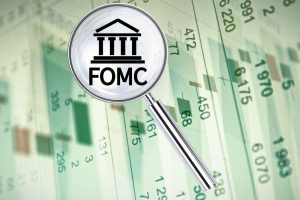
History suggests that buying clean energy stocks when they’ve dropped tremendously and are out of favor with Wall Street can produce some great profits. For evidence of that assertion, consider that the solar energy ETF, Invesco Solar ETF (NYSEArca:TAN), jumped from $17.50 in April 2017 to $108.69 in January 2021. Similarly, JinkoSolar (NASDAQ:JKS), a leading China-based maker of solar panels, soared from around $8 in October 2018 to $72 in December 2020. Finally, wind-energy project developer Orsted (OTC:DNNGY) jumped from $15.25 in November 2017 to $36.28 in Jan. 2020.
Now, the Street is bearish on clean energy because the sector has hit a rough patch due to high interest rates, overordering by Europe in the first half of 2023 and California’s reduction in the amount of money that the owners of rooftop solar panels can obtain utilities. But most of the world’s largest nations are still rapidly embracing clean energy. At the same time, the electrification of transportation and the proliferation of data centers will increase the demand for the cheap electricity that solar panels and wind turbines provide. Here are three stocks to buy for the coming clean energy comeback.
First Solar (FSLR)

On Feb. 14, Canadian bank RBC Capital started coverage of First Solar (NASDAQ:FSLR) with an “outperform” rating.
The bank believes that the solar sector is close to reaching a positive turning point and will be boosted by “support from” governments and falling expenses. Additionally, RBC expects solar companies to get a big lift from interest rate cuts going forward.
RBC identified FSLR stock as its top pick among solar firms, citing its high exposure to large projects by utilities. RBC Capital noted that the outlook for such undertakings is much more stable than for the residential solar space.
Moreover, First Solar has a gigantic backlog of 81.8 gigawatts, making its outlook stable for the next several years.
The firm is a big beneficiary of solar tax credits, expecting to obtain $670 million to $700 million this year.
The forward price-earnings ratio of FSLR stock is very low, at 11.6 times.
Darling Ingredients (DAR)

Darling Ingredients (NYSE:DAR) and partner Valero Energy (NYSE:VLO) recently announced that a joint venture, Diamond Green Diesel, remained on track to start producing about 235 million gallons of sustainable aviation fuel (SAF) annually beginning next year.
The demand for SAF is far ahead of the fuel supply, so Diamond Green should be able to sell all the fuel it can produce at a high profit.
Moreover, “At least 43 airlines have already committed to use some 13 million mt of SAF in 2030, with more agreements being announced regularly,” the International Air Transport Association reported in December, according to S&P. As a result, Diamond Green and, by extension, Darling Ingredients have very bright futures.
Despite these strong, positive catalysts, the forward price-earnings ratio of DAR stock is a tiny 8.8.
Shoals Technologies (SHLS)

Shoals (NASDAQ:SHLS) develops equipment used in large-scale solar projects. As a result, like First Solar, it is much more exposed to major utility initiatives than the residential rooftop market. Utility solar is doing much better than residential solar because the former is much less sensitive to interest rates.
Canadian bank RBC Capital is a big fan of First Solar and Shoals. The bank believes the company has a “superior margin profile and growth” compared to its peers.
Indeed, in the third quarter, the company’s revenue jumped 48% versus the same period a year earlier, while its EBITDA, excluding certain items, soared 81% year-over-year to $48 million.
Given Shoals’ rapid growth, its forward P/E ratio of 18 times is low.
On the date of publication, Larry Ramer held a long position in SHLS. The opinions expressed in this article are those of the writer, subject to the InvestorPlace.com Publishing Guidelines.







